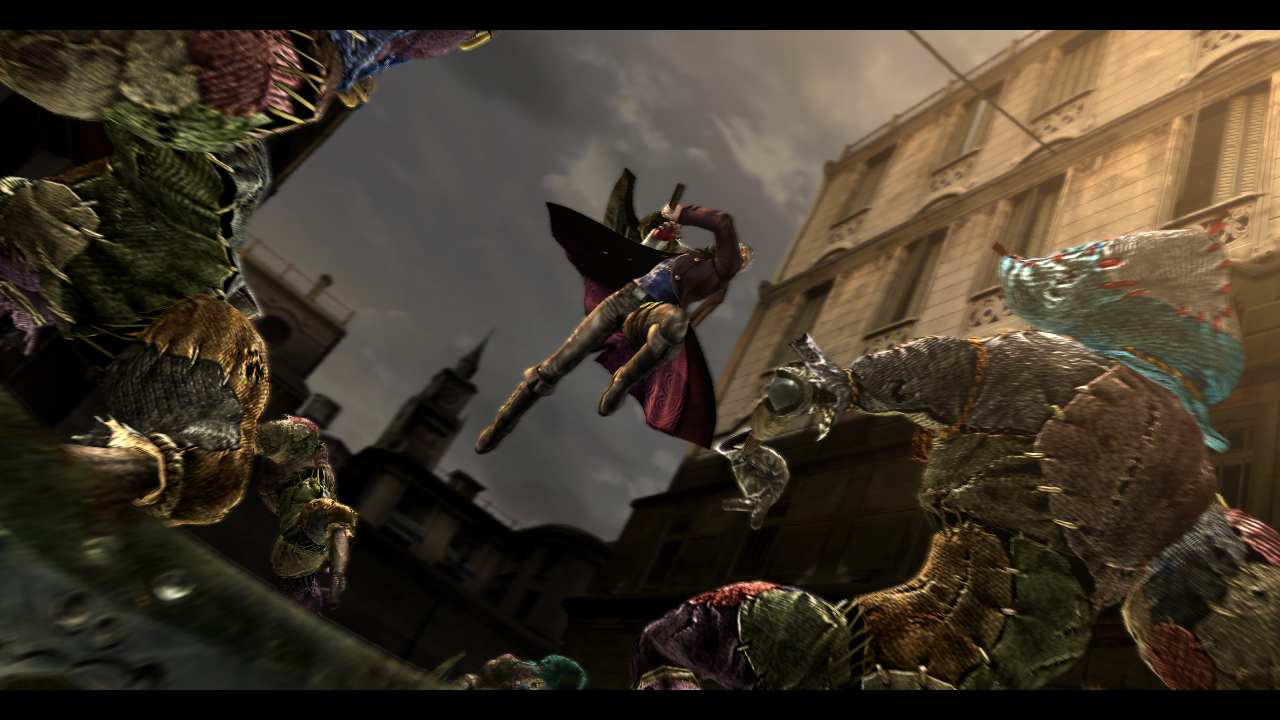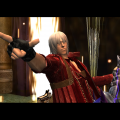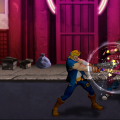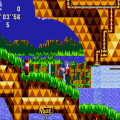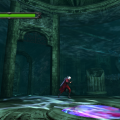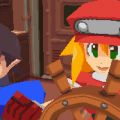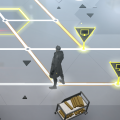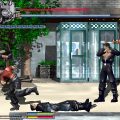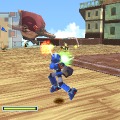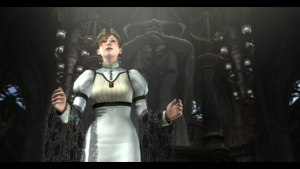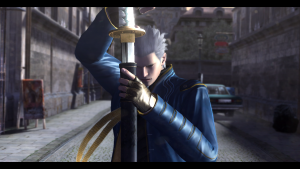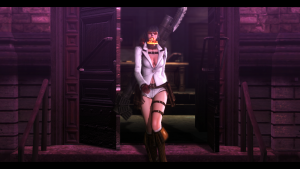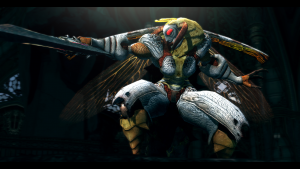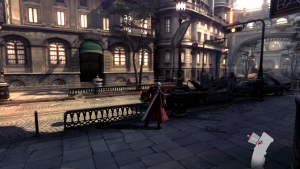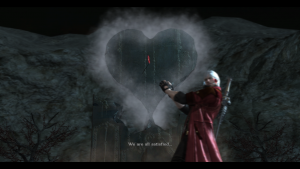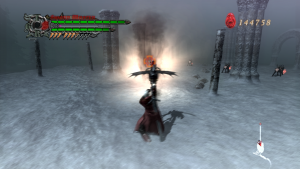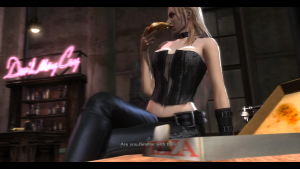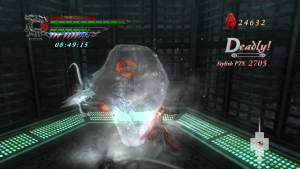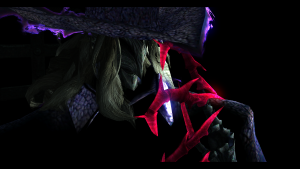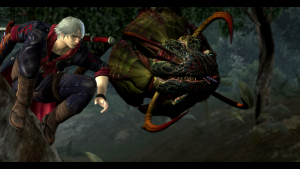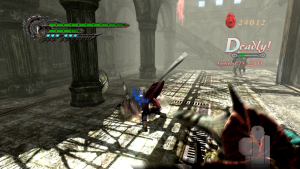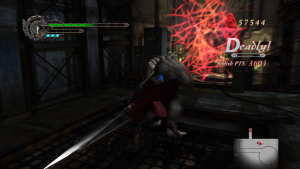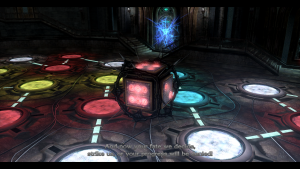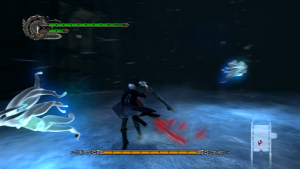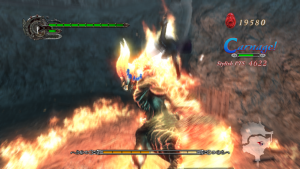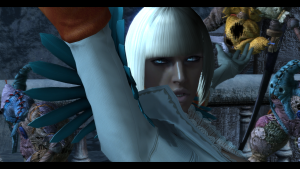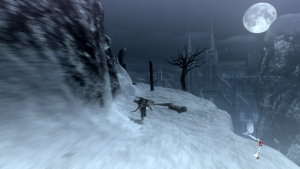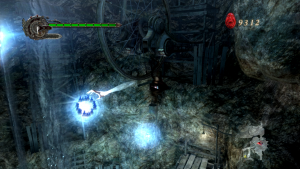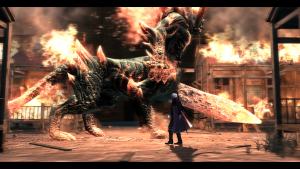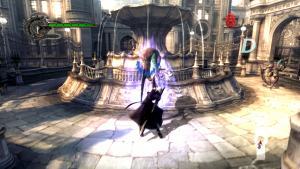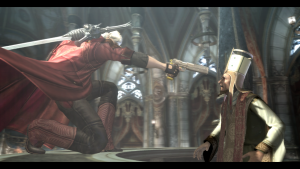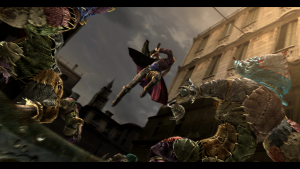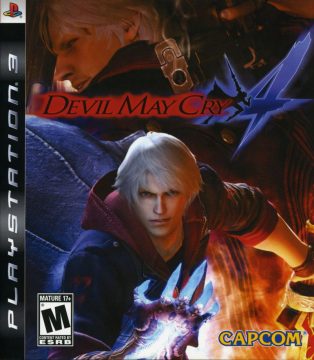
Devil May Cry 4 has become far more appreciated since its initial release, where the fanbase had a more mixed and confused reaction due to the very questionable choices that were being shared through development. It seemed as if Dante, the series main lead, was going to be replaced by a new character named Nero, a move that had to be met halfway inside Capcom itself as this was only allowed if Dante would be playable for a portion of the game as well. It also suffered a bit due to trying to design the thing for the PS3 hardware, which was infamously difficult to design for early on due to the bizarre cell processing system in it. The end result is that DMC4 was rushed a bit, nowhere near as badly as DMC2, but enough that it was clear that chunks of it were simply absent, including major narrative elements that had to be explained in two light novels based on the game. The game ultimately sold quite well, with three million units shipped by the end of 2014, and got strong reviews from critics, though not as strong as DMC3‘s overwhelming praise.
In many ways, DMC4 was the most mechanically complex game in the series at this point. Newcomer Nero lacked extra weapons, but made up for it with an in-depth move set and his devil bringer abilities. Unlike Dante, part of Nero’s body had gone full on demon, resulting in a strange arm that you could use to drag Nero towards enemies or bring them to him, even allowing grappling attacks and a mess of air combo possibilities. Controlling Nero felt satisfying, as his singular weapon set was filled with alternate combos and moves you could experiment with as well as Dante’s huge arsenal in the last game, but with much more familiarity by the end game.
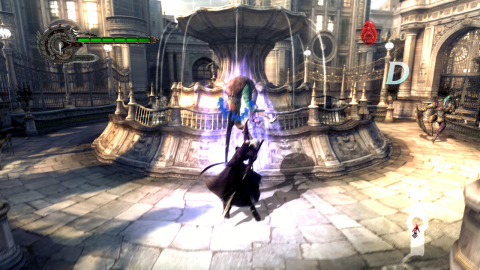
There was also an attempt to make platforming a bit more central through Nero’s skills. With his devil bringer, he could grapple and propel himself around on set wisps in the air, creating new ways to traverse the area. This would also teach the player that you could also use this same skill to fling yourself out of the range of some enemy attacks, or use them as a way to gain mobility for combo variety. Nero would also gain a few new devil bringer abilities through the game, simply natural extensions of his basic grappling abilities, giving the game a solid sense of forward progression without rewarding the players with new weapons.
Dante’s segment is where you can start to see the seems in the game’s design. It’s not that Dante isn’t fun to play as, on the contrary. You can now switch between all of his base styles along with his guns and weapons, and he ends up with two of the most fascinating weapons in the whole series, Lucifer and Pandora. The first is a melee weapon that sticks enemies with little swords you can detonate at any time, making it a weapon based on planning and patience instead of fast combo output. Pandora is also one of the most ridiculous gun weapons ever designed, shifting form for use in all sorts of different situations, giving his gunslinger style greater importance it lacked before. On top of that, you can go hog wild with his move set quickly, as all of Nero’s proud souls are transferred to Dante when you take control of him. The problem is that most enemies in the game were clearly made to be fought with Nero’s devil bringer, and those particular enemies are way less fun to fight as Dante (particularly the Cutlass, which swim through the ground itself and are a pain to nail down).
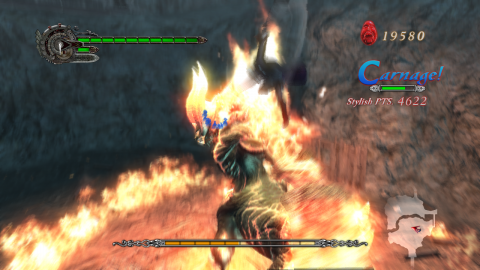
Proud souls act as a sort of replacement for red orbs this game. Instead of a single currency for moves and items, red orbs are now for items only, and the new proud souls rewarded at the end of a mission can be used for moves, the amount you get changing with your final grade. This makes the style meter and mission replay much more valuable to the core game loop, and it has one additional positive – you can refund moves to get back proud souls and use them elsewhere. To make sure this doesn’t get abused, the cost of moves goes up with every purchase, but the ability to refund and reinvest results in the ability to customize Nero and Dante however you wish as you try and see what does and doesn’t work for you.
This does mean that red orbs have less value than ever before, especially in a series that penalizes you for using items, which makes it bizarre that you still have to collect red orbs for a high mission grade. They effectively become useless towards the end game once you nab all the blue and purple orbs from the store, and the only reason you’d ever bother finding them is so you can get more proud souls. It was a really bad call that makes replaying missions much less enticing, which is a huge problem in the special edition. Vergil, Trish, and for the first time ever, Lady, are all playable in this version, going through the same missions as Nero and Dante. You’d want to unlock all their moves, of course, but to do that, you still have to replay all the same missions and still track down red orbs, which are effectively worthless about two thirds the way through any given campaign. It was a baffling decision that DmC thankfully did away with.
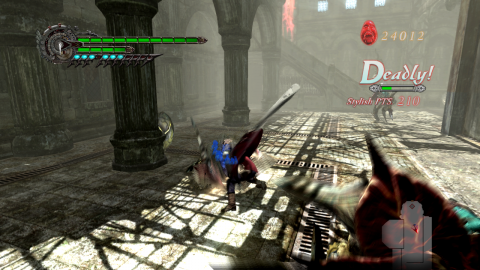
The narrative is also in shambles. There’s almost no definition for Nero’s back story, making his entire journey feel flat. He’s fun in his own way, the punk archetype to match Dante’s surfer cool and Vergil’s prep style, but his entire motivation comes down to being obsessed with protecting his love interest, Kyrie, without actually explaining why they care about each other so much. It may be a blessing the game doesn’t go further into it, though, because it turns out they’re kind of adopted brother and sister. It’s also worth mentioning Trish does have one creepy moment with Nero, who is definitely Vergil’s kid. Oh this franchise and the incest subtext…
Also worth noting that Nero is voiced by Johnny Yong Bosch, aka the dub actor for Ichigo from Bleach, who is basically the exact same character. A punk with a heart of gold obsessed with protecting others with an inner demon. It’s uncanny. Kyrie even gets treated exactly like the main love interest of Bleach by becoming a damsel, but somehow even more mistreated as a character, as she just stops having lines after the first few cutscenes and exists only to give Nero motivation for his actions.
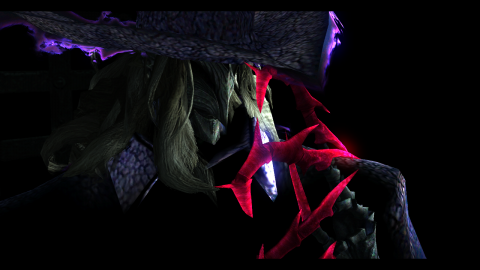
The villains are also the worst in the whole franchise, bar none. While Agnus is fun, getting quite possibly the funniest scene in the whole series during his fight with Dante, the rest of the obviously evil demon worshiping church are woefully underdeveloped. Sanctus should have been a decoy villain, not the main antagonist, being the most openly pathetic by just being a con man who stole just about every power he has. They wasted Liam O’Brien on this loser!
All that said, the series really refines its signature personality here after 3 defined it. Nero is a fun and ridiculous dude in his own right, changing out obnoxious ego and dorky lunacy for a very short temper and a lot of talk back. He’s perfectly defined as a character just through one of his combos, which starts as a sword swipe and quickly devolves into him smashing his sword on the ground like a child throwing the world’s worst tantrum. He even revs up his sword like a motor cycle to make it hit bigger and faster, with flame effects added. Everything he does and says is the most cartoonish version of Japanese punk ever done that wasn’t done by a character wearing an absurdly large pompadour.
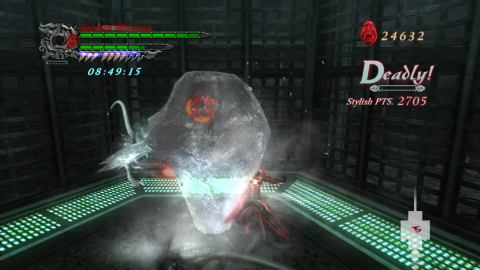
Of course, the minute Dante enters any scene, he sucks away all attention right to him. In this game alone, he dodges Nero’s attacks and strikes a lazy pin-up pose, peaces off like a Looney Tunes character after killing a pope and starting a riot, and just kills a massive demon with a single regular gunshot that somehow results in a massive explosion. Oh, and he recites a minute long poem about his dick. Yes, that happened, and it still feels like he has no idea what sex is to even more absurd lengths. It’s hard not to love this idiot.
The presentation is overall strong. There was a lot of doing stuff because now they could, like the first boss battle being with a demon constantly on fire. The particle effects are fantastic, and every area of the game feels large and lived in. Everyone also has tools that prevents these large levels from becoming obnoxious DMC2 dead space situations, especially Nero and his devil bringer. The music is also all cheesy goodness, not at the level of DMC3, but fun in its own right. Nero’s battle music remains the stand out track.
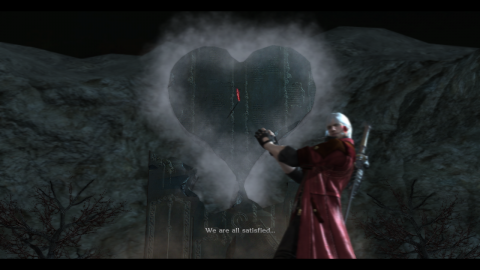
The character design is mixed, though, not helped by some awkward looking models on display here. Lady’s new outfit is a complete disaster, almost coming together before you notice the absurdly short hot pants. Nero’s design feels phoned in, looking almost exactly like a young Dante with a slightly color mixed outfit that leaves no real impression. There’s not enough flair with the church leaders, with only Agnus sticking out due to his odd posture and body type. The demons all fair way better, with the fire demon Belial and the goofy looking scarecrow/doll enemies as the stand outs. Dante and Trish also get the best outfits overall, Dante getting a weird cowboy theme for his classic outfit that helps to put focus on his age and physical strength, while Trish gets a solid update to her classic biker girl look.
The game as a whole feels incomplete in a lot of ways, which makes what it does well all the more impressive. The mechanical depth here is absurdly vast, and there’s a real feel for what the series is here greater than even the third game. However, the narrative falls flat, the villains end up being a joke that not even Dante takes seriously, and there’s just this look about it that feels painfully dated even more than the looks of the first two games. It’s a real tech demo sort of thing, with a lot of unnecessary effects (the forest is bloom hell) and glossy character models. It feels like every PS3 game from this era had this exact same look, and it has not stood the test of time. The constant blur effects do not help if you have issues with motion sickness, but you can adjust to them overtime. It’s a very flawed game, but DMC4 manages to be great in all the right areas, so the small frustrations or moments of mediocrity are mostly out-shined by the exciting combat and sense of personality. It was a good step forward for the series, and its problems could be ironed out with a sequel now that the team understood how to develop for the PS3.
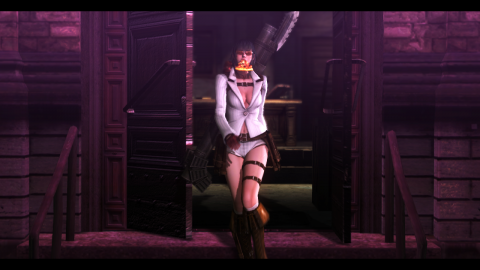
Unfortunately, Capcom was starting to get ridiculous ideas of what a successful game sold like around this time, and DMC4 didn’t do quite as well as they wanted, particularly on PC. It was around this same time that Kenji Inafune was also suggesting that Capcom look to more western studios to get a better foothold in western markets, a move that resulted mainly in a lot of disappointing reboots and sequels. So, it’s very strange that the best thing to come out of this move was one of the single most despised games ever made even before release. What follows is a story of bad decisions, ego clashing, and fan backlash that has yet to be matched by any other release. It’s time to get to the elephant in the room. It’s time to talk about Ninja Theory’s DmC: Devil May Cry.
